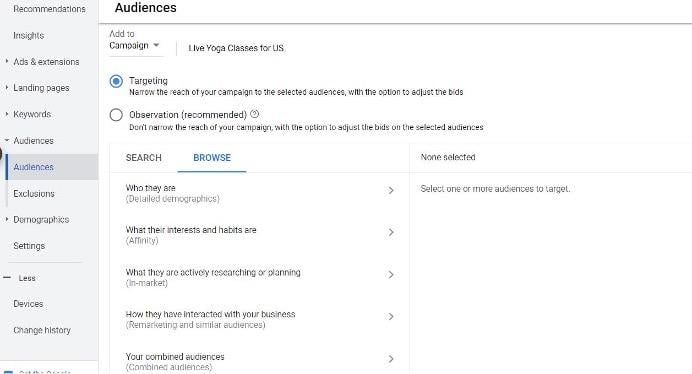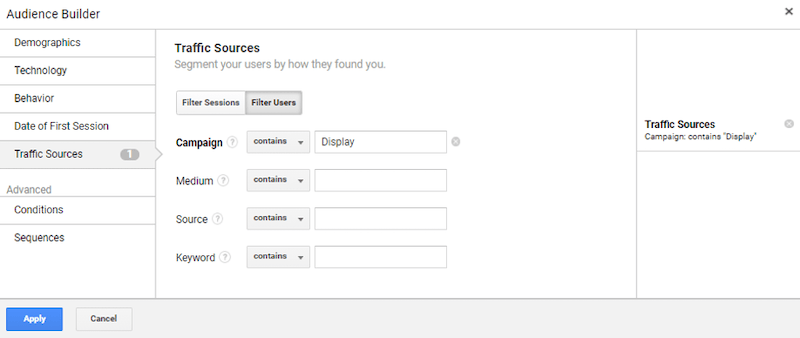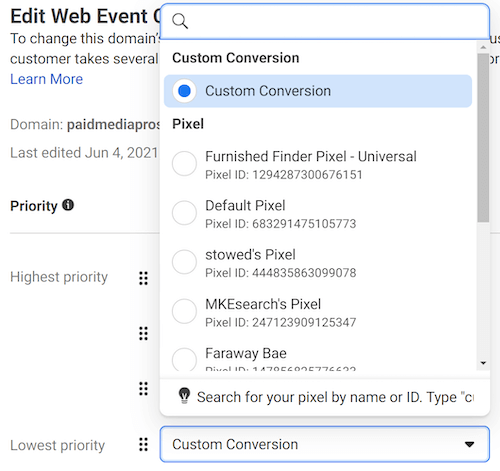










PPC best practices—like segmenting and targeting your audience, choosing the right keywords, and using data to optimize—are pretty evergreen. But because platforms evolve, companies grow, and customer behaviors shift, the strategies we use to practice them are usually not.
And we've seen lots of challenging changes over the past year or so from Google, Apple, and Facebook in the name of automation, privacy, and pandemics.
That's why I'm going to share with you eight PPC strategies that you can use today to overcome the many challenges we're facing today.
These strategies involve the following:
- A modified broad match workaround
- Reporting beyond Google Analytics
- A way to find new keywords
- A different way to use display ads
- First-party data collection
- Creating accurate B2B buyer personas
- Dealing with Facebook [aggravated] Event Measurement.
- A unique way to use click-to-Messenger ads
Let the games begin.
PPC strategies you need to be using in 2021
Almost none of the strategies and tools covered in this post are new. What is new is the role they play in today's PPC landscape. With Google taking away modified broad match and low-volume search terms; Facebook Ads limiting us to only eight conversion events, and eventual cookiepocalypse redefining pretty much everything, some strategies and tools that were ineffective or didn't make sense to use in the past are now coming out on top.
1. Pair broad match with audience targeting to succeed without modified broad
Google's retirement of modified broad was based on their claim that "broad match is now more effective at driving performance" and that modified broad and phrase match often have the same use cases. The PPC community largely begged to differ. Even if it is more effective, broad match will always carry the risk of wasting money on low-converting traffic.
But with this workaround, you can get the benefits of broad match at a much lower risk.
How to do it:
With this strategy, you’ll create a workaround by pairing the broad match keyword type with larger affinity, in-market, and custom audiences.
Basically, you’re telling your ad to show for any search that contextually matches up to your broad match keyword, but only if it’s coming from someone in your selected targeted audience.
This way, even if you’re not showing for the best query, you’re at least showing to the right person and getting some brand exposure. And since that audience by design is going to be searching more relevant queries anyway, the “risk” of broad match is already reduced. And you may even find new terms or audiences to target (or exclude).
This strategy is helpful if you're looking to:
- Safely scale your campaigns
- Increase brand awareness
- Discover new keywords
- Increase your impression share for a given area
Before you get started, review your campaign setup to make sure there aren’t any restrictions or exclusions that could render this strategy ineffective. You’ll also need a solid negative keyword list to begin with.
For more help with this strategy, head here.
2. Turn YouTube Studio into a video and display ad optimization tool
YouTube Studio is widely known as a hub for Creators, but when connected with Google Ads account, it becomes an invaluable tool for more than just video ad optimization.
Why? Because YouTube Studio gives you access to data and insights you won’t find in standard Google Ads reporting.
What you can do:
- Plug leaks in spend: In the Device type report, you can add the “Card clicks” and “Average percentage viewed” columns to find any device types that are showing your ads but not getting any card clicks.
The "Card clicks" column here shows that TV, Game console, and Tablet placements could be wasting your spend.
- Build custom audiences: In the External Sources report, you can identify sources outside of YouTube that are sending traffic to your videos and then use them to build custom audiences for Display, Video, or Discovery campaigns.
- Get placement ideas: In the Suggested Videos report, find out which videos you’re appearing for in the closing suggestions and use them for video or channel placement ideas.
- Perfect your video ads: The Key Moments report will show you the exact moments in your videos when viewers engaged or dropped off. It doesn't get any more specific than that!
For more ways to use this PPC strategy, head here.
3. Get new keyword ideas with Microsoft Advertising Intelligence
Microsoft Advertising Intelligence is a keyword planner tool that you access by downloading a plugin for Excel. The amount of information it provides can be dizzying, but when used right, you can discover new keywords that would otherwise slip through the cracks (or that you may not be able to discover through the limited Search Terms Report).
How to use it:
What you’ll do is paste a list of keywords into the tool’s Excel interface. You’ll then get a list of keyword recommendations with volume, bid estimates, and [lots of] other metrics.
But that's only the beginning. Now you can get more granular with different views:
- Traffic: Organize by device (not match type) to get a duplicate-free list of keywords with total searches in the past month.
- Age group and gender: Identify keywords that get searched but not by the right audience.
- URL: Paste a list of URLs in to get keyword suggestions, and then check the device and keyword match type used for those keywords.
- Associated keywords: Find related keywords other advertisers are bidding on and see if it's feasible for you to compete.
Now, you can plug the list of new keywords you come up with into the Google Keyword Planner. And don't exclude low-volume keywords. You'd be surprised to see how many keywords that have little to no search volume in Bing are actually quite popular on Google—and vice versa.
So be sure to upload your Microsoft keyword lists to Google and Google keyword lists to Microsoft. (P.S. You can also use our Free Keyword Tool to get Bing and Google performance data in one place.)
Learn more about this PPC strategy here.
4. Use display ads for more than just brand awareness
This PPC strategy is useful for advertisers to show clients how their display ads are impacting their campaign performance (i.e., to show that the money you’re spending on Display ads is worth it).
What you need to do:
- Set up your Display campaign names to always include “display” so you can create a Traffic Source Audience. Or, manually tag your Display URLs with a specific source and medium.
- Make sure your Traffic Source audience is added to both Google Ads and Google Analytics. That way the metrics will appear in the Audiences report.
Now, the numbers in Google Analytics will show you which users, who did not convert from your Display campaigns, eventually returned to your site via other channels and converted.
You can also take those audiences you created and apply them in observation mode to your ad groups or campaigns in Search. This way, you can get information on what users are searching for after interacting with your Display ads.
Learn more about this PPC strategy here.
5. Run lead generation ads to scale first-party data collection
As third-party cookies are in their final stages of life, collecting first-party data is now a priority for advertisers. While you can (and should) include lead magnets on your site that collect email addresses and other information, you can scale that data collection by using lead form ads, particularly on Facebook.
Two ways to do it:
- The first is by adding custom questions to your Facebook lead ad Instant form. But since more fields can lower completion rate, you might instead select fields that auto-populate based on the information the user has made public in their profile.
- The second is to ask for only their email to capture a large volume of leads. Then, enroll them into your email marketing campaigns that both build trust and send them to your site. These trusting visitors will now be more likely to fill out forms there with additional [first-party-data-collecting] fields.
Of course, you'll need a robust email and content marketing program set up so you can provide offers your target audience considers worth giving up their information for.
For more tips on this strategy, head here.
6. Use LinkedIn Website Demographics to refine your B2B buyer personas
Though this tool came out back in 2017, it still doesn’t seem to get a lot of attention. With it you can capture your own first-party intent data for effective B2B PPC.
Great ways to use it:
- Segment the users who clicked on your LinkedIn ads by job function. You can then compare this data to your pixel data to measure conversions by function. This way, if you’re getting a large amount of traffic from, say, BDRs but they don’t convert, you can either adjust your offer or exclude them in your LinkedIn audiences or Microsoft Ads profile targeting.
- Analyze performance according to company size. So if you get a high volume of traffic from small businesses who don’t have the budget for your services, you could adjust your ad copy to include a starting price.
- Filter by job seniority to identify the best types of content to use in your B2B marketing strategies. For example, low-seniority prospects might engage with high-level overviews and educational content while those of higher seniority might respond better to leadership topics or ROI-focused content.
- Use these insights on your audience to identify placement options for niche sites your top buyers are visiting.
For more tips on using the LinkedIn Website Demographics tool for PPC success, head here.
7. Use custom conversion events to cope with Facebook [aggravated] Event Measurement
Going from unlimited to-dos to only eight? Fun.
Going from unlimited Facebook conversion events to only eight? Not fun.
Let’s say Facebook Ads for webinars are your top-of-funnel bread and butter. And that since you serve six different verticals, you have a separate conversion event set up for each industry. Well now, you now only have two conversion events left for your entire domain.
What to do:
For the subsequent ad in your Facebook funnel, make the ad creative and copy the same for all industries. Now you can create one Custom Conversion event for all webinar signups, and then choose that one Custom Conversion as just one of your aggregated events.
There are plenty of ways to combine your events in a way that works for you, such as by:
- Offer (content vs consultations vs discounts)
- Stage of funnel (top vs mid vs bottom)
- Seasonal actions together (you can switch out your eight events if needed).
For more ways to deal with Facebook Aggregated Event Measurement, head here.
8. Turn click-to-Messenger ads into lead-generating chatbots
You could also steer clear of conversion events and pixels altogether by using Facebook campaign objectives that don't send users to your site—like leads (mentioned above) and messages (mentioned below).
Not only does the messages objective spare you the conversion event complications, but you can also do more with its current iteration. In particular, you can basically turn it into a conversational lead ad.
How to do it:
Once you select the messages objective, go through the standard campaign setup (media type, primary text, headline, etc.) Then, scroll down to the Message Template section and select “Generate Leads - Messenger Only.”
Click Create and you can set up a conditional chat sequence to gather information and further qualify leads.
The conversational approach to information gathering can sometimes engage users who might completely ignore a direct response ad. It's also a more creative method that might be more appealing to fatigued audiences.
For more help with this PPC strategy, head here.
Use these 8 PPC strategies to move with the direction of advertising in 2021
As I mentioned from the start, these strategies and the tools to carry them out have been around for a while. But they're resurfacing as the PPC world is heading toward one that is privacy-first (and by the looks of it, heavily automated).
- Pair broad match with audience targeting as a modified broad workaround.
- Turn YouTube Studio into a video and display ad optimization tool.
- Get new keyword ideas with Microsoft Advertising Intelligence.
- Use display ads for more than just brand awareness.
- Run lead generation ads to scale your first-party data collection.
- Use LinkedIn Website Demographics to refine your B2B buyer personas.
- Combine events to cope with Facebook [aggravated] Event Measurement.
- Turn click-to-Messenger ads into lead-generating chatbots
* This article was originally published here
No comments:
Post a Comment